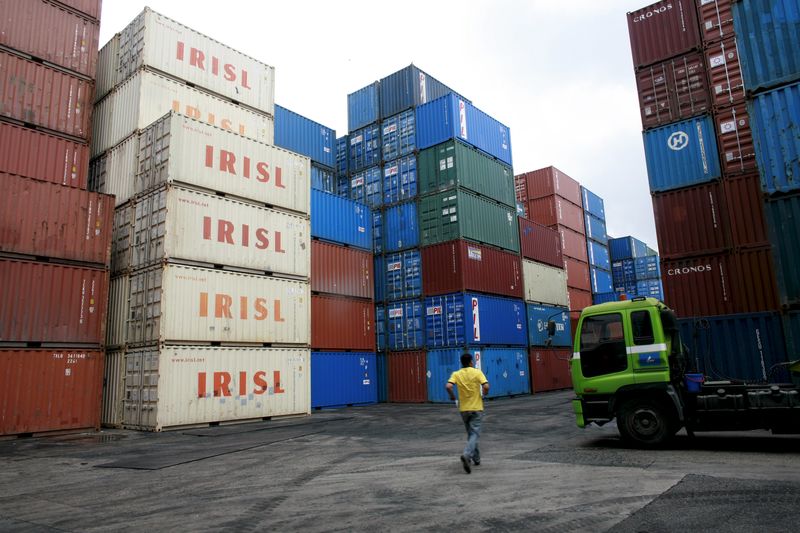By Martin Petty
Nov 13 (Reuters) - Fifteen Asia-Pacific economies are set to
conclude talks on Sunday and sign what could become the world's
largest free trade agreement, covering nearly a third of the
global population and about 30% of its global gross domestic
product.
The Regional Comprehensive Economic Partnership (RCEP),
which could be approved at the end of a four-day ASEAN summit in
Hanoi, will progressively lower tariffs and aims to counter
protectionism, boost investment and allow freer movement of
goods within the region. A U.S.-China trade war and U.S. President Donald Trump's
"America First" retreat from predecessor Barack Obama's "pivot"
towards Asia has given impetus to complete RCEP, which is widely
seen as Beijing's chance to set the regional trade agenda in
Washington's absence.
The U.S. election win by Democrat Joe Biden, however, could
challenge that, with the former vice president signalling a
return to stronger U.S. multilateralism.
WHAT IS RCEP ALL ABOUT?
RCEP includes China, Japan, South Korea, Australia, New
Zealand and the 10 members of the Association of South East
Asian Nations (ASEAN) - Brunei, Vietnam, Laos, Cambodia,
Thailand, Myanmar, Malaysia, Singapore, Indonesia and the
Philippines.
India was involved in earlier discussions but opted out last
year.
One of the deal's biggest draws is that its members already
have various bilateral or multilateral agreements in place, so
RCEP builds on those foundations.
It will allow for one set of rules of origin to qualify for
tariffs reduction with other RCEP members. A common set of
regulations mean less procedures and easier movement of goods.
This encourages multinational firms to invest more in the
region, including building supply chains and distribution hubs.
WHAT IS ITS GEOPOLITICAL SIGNIFICANCE?
The idea of RCEP was hatched in 2012 and was seen as a way
for China, the region's biggest importer and exporter, to
counter growing U.S. influence in the Asia-Pacific under Obama.
Negotiations for a U.S.-led "mega-regional accord" then
known as the Trans-Pacific Partnership (TPP) - Obama's signature
trade deal - were making strong progress and China was not among
its 12 members.
Momentum behind RCEP grew when Trump withdrew the United
States from the TPP in 2017, taking away its main architect and
two-thirds of the bloc's combined $27 trillion GDP. It was
renamed the Comprehensive and Progressive Agreement for
Trans-Pacific Partnership (CPTPP) and it includes seven RCEP
members.
As the key source of imports and main export destination for
most RCEP members, China stands to benefit and is well
positioned to shape the trade rules and expand its influence in
the Asia-Pacific, which Obama had openly sought to prevent.
HOW IS RCEP DIFFERENT TO CPTPP?
RCEP focuses heavily on slashing tariffs and increasing
market access but it does not harmonise to the same extent as
CPTPP and is seen as less comprehensive.
It requires fewer political or economic concessions compared
with CPTPP and RCEP has less emphasis on labour rights,
environmental and intellectual property protections and dispute
resolution mechanisms, although it does include provisions on
competition.
RCEP's market size is nearly five times greater than that of
the CPTPP, with almost double its annual trade value and
combined GDP.
WILL A BIDEN PRESIDENCY CHANGE ANYTHING?
Biden is signalling a swing back to the multilateral
approach of the Obama administration, but it might be premature
to talk about trade deals given the huge challenges awaiting him
on the domestic front, and risk of upsetting unions that helped
get him elected.
His trade priorities are expected to focus on working with
allies to jointly exert pressure on China over trade and to push
for changes at the World Trade Organization. Rejoining the CPTPP
in its current form might not be on the horizon soon.
The trade unions and progressives that backed Biden's
election have previously been sceptical about free trade
agreements. He has included elements of those in his transition
team and may be advised to maintain protections on vulnerable
industries like steel and aluminium. However, indications of Biden's intent to reconnect in the
Asia-Pacific would be broadly welcomed, including as a
counterbalance against China.
(Editing by Robert Birsel)
